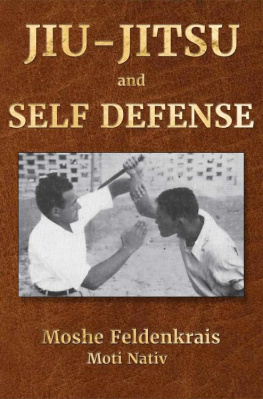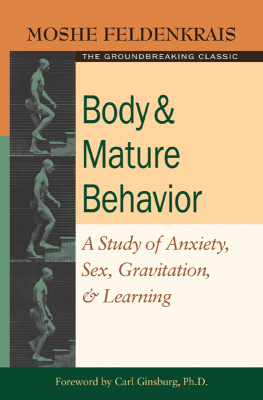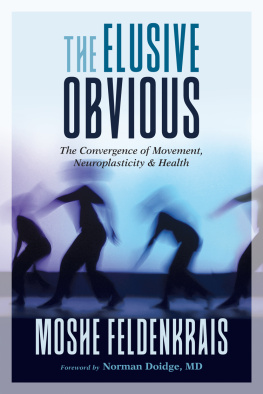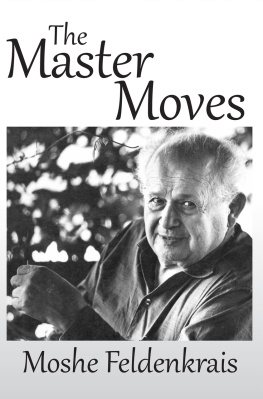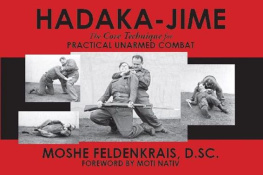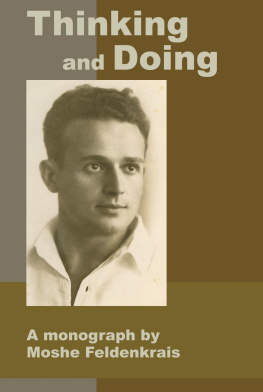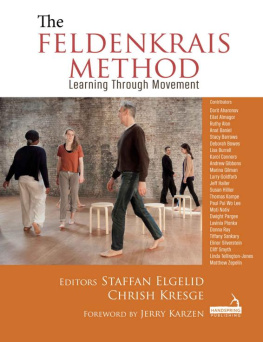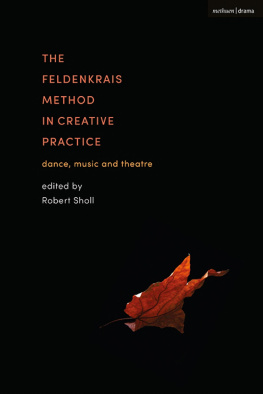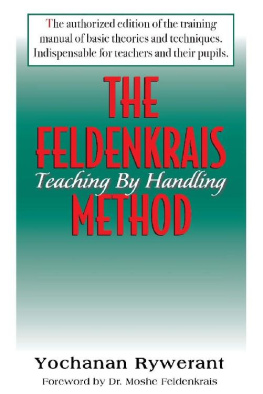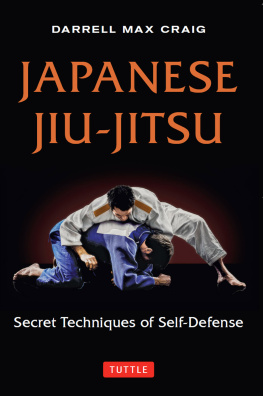JIU-JITSU
and
SELF DEFENSE
Moshe Feldenkrais
Moti Nativ
Genesis II Publishing, Inc.
Longmont, Colorado
Jiu-Jitsu and Self Defense
Moshe Feldenkrais (1904-1984)
Moti Nativ
Jiu-Jitsu and Self Defense / by Moshe Feldenkrais 1930
2021 Moti (Mordehai) Nativ
All rights reserved. No part of this publication may be reproduced, stored in a retrieval system or transmitted in any form or by any means, electronic, mechanical, photocopying, recording or otherwise without the prior permission of the publisher or in accordance with the provisions of the Copyright, Designs and Patents Act 1988 or under the terms of any license permitting limited copying issued by the Copyright Licensing Agency.
Feldenkrais, Feldenkrais Method, Functional Integration, ATM and
Awareness Through Movement, are Servicemarks of The Feldenkrais Guild of North America.
Neither the Publisher nor the Author assume any responsibility for any loss or injury and/or damage to persons or property arising out of or relating to any use of the material contained in his book.
Published by:
Genesis II Publishing, Inc.
AchievingExcellence.com
Longmont, Colorado, USA
Designer: Al Wadleigh
LCCN: 2021944126
ISBN-13: 978-1-884605-21-5 (ebook)
ISBN-13: 978-1-884605-11-6
Printed in USA
The reader who closely examines the tactics shown in this book will realize that the beginning of each technique is the instinctive movement a person makes when he is attacked in the manner described... Therefore, the defender doesn t have to determine how to begin before he actually begins; starting comes by itself, instinctively.
- Moshe Feldenkrais, Tel Aviv, 1930
CONTENTS
TO THE NEW EDITION
by Moti Nativ
T he first time I got up on stage to introduce the book Jiu-Jitsu and Self Defense to the public was in 2004, at an event commemorating Moshe Feldenkraiss centennial birthday. My martial arts students and I demonstrated techniques from the book that evening.
I love to search for rare books on martial arts in used book stores in Tel Aviv. I walked into a store that I frequented and the seller, who recognized me from previous visits, opened a well-hidden drawer. In that drawer, he pulled out Jiu-Jitsu and Self Defense by Moshe Feldenkrais. It turned out to be a first edition copy with a handwritten dedication to a friend of Moshes. There was another treasure hiding between the pagesthe original passport photo that was used for the front piece! The photo led to a photography studio where I garnered a few more details about Moshes life. The book was expensive, but I didnt hesitate, and it has been my companion ever since.
In 2008, I purchased the rights to translate this book from Michel Feldenkrais Silice.

I began work on this project quite energetically. However, circumstances (both professional and health-related) stalled this project and now, in 2020, I am ready to bring it to fruition. During the intervening years, I have had to deal with a few medical issues. The Feldenkrais Method helped me to rehabilitate myself and overcome these health problems.
It is said that every delay is for the good. My body and brain have been through a lot during the past years and I have clarified many insights, discoveries, and new connections. I feel that now is the optimal time to write this preface and, furthermore, I must restrain myself because I could write an entire book about this book.
I found that returning to work on the English version of this book in the year 2020 had special significance because this year we commemorate the Haganahs centenary. The Haganah was a Jewish paramilitary organization, which sixteen-year-old Moshe Feldenkrais joined at its inception in 1920. Ten years later, this book describing his training method, which was based on a decade of field experience, was published. More than a decade has passed since I began this project. During the intervening years, I developed a deep, personal connection to this book and to Moshe, the martial artist. This book spurred me to research the synergy between the Feldenkrais Method and martial arts. I have taught over three hundred workshops, which grew out of this synergy.

We tend to consider Moshe a genius because of his Awareness Through Movement (ATM) lessons. However, I contend that his genius was evident much before he developed the method that bears his name. I claim that Jiu-Jitsu and Self Defense was its first blossom.
After many years of studying martial arts and engaging in intensive training sessions, which were often quite extreme, in hindsight, I stupidly pushed myself with no regard to my limits; I had a body that had sustained many injuries. My knees had suffered considerable injury. These injuries were due to the soccer that I played early on, like Moshe. A back injury during Judo training in 1985 brought me to the point where the orthopedists recommended that I stop training and undergo surgery to correct an extreme displacement of the L4L5 vertebrae. As I was readying myself for surgery, I was introduced to the Feldenkrais Method by my sensei, Doron Navon. After a number of Functional Integration lessons with Jeremy Krauss, I joined an ATM group led by Eli Wadler. I was the only man in the early morning class. I was strong and young and you can imagine my surprise when I saw that my fellow students, who were all elderly women, performed the movements easily and gracefully while I struggled. After the lesson, I was astonished to discover that I remembered the entire movement sequence. I wrote down all the steps of the lesson and began to teach these movement lessons to my martial arts students. For a long time, I went to an ATM lesson each morning and taught the same lesson during the evening martial arts training. Uli Yaron, a Feldenkrais Method practitioner, who happened to be present when I was teaching a movement lesson at my dojo, encouraged me to enroll in a Feldenkrais Professional Training Program (FPTP).
In 1991, I registered for the FPTP Jerusalem 1 (Anat Baniel, Educational Director) and graduated in 1994. I had had quite a bit of practical experience by the time I started the practitioner training course, but that didnt really give me an advantage over the other trainees. Each one brought his or her unique talents and we all went through a learning process that yielded wonderful results. One thing that I felt was lacking in my course (and apparently in other FPTPs also) was the historical background of Feldenkrais, the martial artist himself. Truthfully, even though I am a martial artist, I did not pay attention to this lacuna at the time. When I completed my course, I still had my day job and did not have the time to develop a full-time Feldenkrais practice. However, I continued teaching ATM lessons during training sessions with my martial arts students. Through my research, I came to understand that Moshes first students of the Feldenkrais Method were judokas and British soldiers stationed at an army base in Scotland, where he was contributing to the British war effort as a scientist.
Next page
